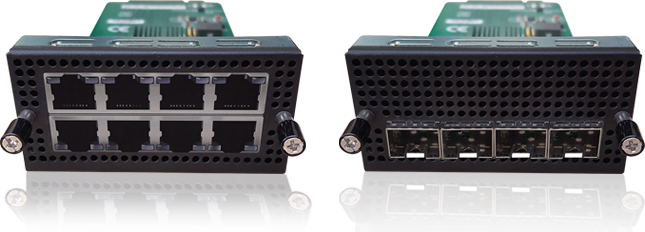Routing Performance
tested systems had no tuning (default reference); latest systems
| ProApps, FreeBSD, pfSense |
2.6Gbit/s forwarding rate on DUT1; 415Kpps forwarding rate on DUT1 |
| Linux (RHE & Fedora) |
2.6Gbit/s forwarding rate on DUT1; 408Kpps forwarding rate on DUT1 |
| Mikrotik |
2.1Gbit/s forwarding rate on DUT1; 349Kpps forwarding rate on DUT1 |
| OpenBSD |
604Mbit/s forwarding rate on DUT1; 188Kpps forwarding rate on DUT1 |
| Brocade vRouter 5600 (DPDK) |
8Gbit/s forwarding rate on DUT1; 2.3Mpps/s forwarding rate on DUT1; |
Netmap Performance
special interest Netmap performance on ProApps & FreeBSD
Suricata IDS mode
(ProApps & FreeBSD) |
5.4Mpps/s aggregated; |
Firewall (IPFW)
(ipfw-user + VALE) |
1.48Mpps/s on a single interface; 3x1.48Mpps per port pair (4.4Mpps agg); |
Important: routing, firewalling & IDS, with or without netmap as stated, were tested on vanilla systems, with no tuning, only for general reference; results had a general ~20% discrepancy upon tests; results shown here are a baseline; numbers may differ on different systems version; systems were tested on the latest available versions on: Jan '16 (rev1).
EXPANSION OPTIONS
ServerU Netmap L-400 supports up to 4x 1GbE SFP and up to 8x 1GbE Copper expansion ports, expanding the entire system to up to 14 gigabit ports. See expansion options below.
Expansions for Netmap L-400, 1Gbit/s Copper
Here is the listing for 1Gbit/s wire (copper) expansion ports with RJ45 connectors for ServerU Netmap L-400.
| Model | Ports | Chipset | Technology |
|---|
| G801-1 |
8x 1Gbit/s |
8x Intel i210 AT |
Copper, RJ45, Bypass 3G |
| G801-2 |
8x 1Gbit/s |
8x Intel i210 AT |
Copper, RJ45 |
| G428-1 |
4x 1Gbit/s |
1x Intel i350 AM4 |
Copper, RJ45, Bypass 3G |
| G428-2 |
4x 1Gbit/s |
1x Intel i350 AM4 |
Copper, RJ45 |
Expansions for Netmap L-400, 1Gbit/s Fibre (SFP)
Here is the listing for 1Gbit/s expansion boards with Fibre (optic) ports and SFP connectors for ServerU Netmap L-800.
| Model | Ports | Chipset | Technology |
|---|
| S406-1 |
4x 1Gbit/s |
1x Intel i350 AM4 |
Fibre, SFP |






